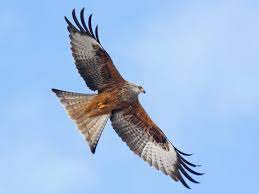The black kite, scientifically known as Milvus migrans, is a remarkable bird of prey that commands attention with its majestic flight and commanding presence. With its striking black plumage and keen hunting skills, the black kite stands as a symbol of grace and power in the avian realm. Join us as we delve into 19 intriguing facts about these awe-inspiring raptors, shedding light on their behavior, adaptations, and role in ecosystems.

1. Aerial Marvel: The black kite is a master of the skies, soaring effortlessly on its broad wings and forked tail.
2. Global Distribution: These raptors are found across a vast range, spanning from Europe and Asia to Africa and Australia.
3. Opportunistic Diet: Black kites are opportunistic feeders, preying on small mammals, birds, carrion, and even insects.
4. Urban Adaptation: Black kites have shown a remarkable ability to adapt to urban environments, scavenging in cities for food.
5. Migratory Wonders: Some populations of black kites are migratory, embarking on impressive journeys between breeding and wintering grounds.
6. Courtship Rituals: During courtship, black kites engage in captivating aerial displays, showcasing their agility and strength.
7. Versatile Nests: Their nests vary from simple structures to elaborate platforms, often built in tall trees or on cliffs.
8. Parental Care: Both parents participate in raising the young, ensuring their survival through feeding and protection.
9. Carrion Clean-Up: Black kites play a crucial role in ecosystems by scavenging carrion, helping to maintain a clean environment.
10. Diurnal Predators: These birds are active during the day, utilizing their keen eyesight to spot potential prey from high vantage points.
11. Vocal Communication: Black kites communicate with a range of calls, from melodious whistles to harsh screams.
12. Cultural Significance: In some cultures, black kites are considered symbols of freedom, agility, and adaptability.
13. Longevity: Black kites can live for up to 20 years in the wild, provided they have access to ample food and suitable habitat.
14. Nesting Challenges: Human disturbance and habitat loss have led to nesting challenges for some black kite populations.
15. Ecological Balance: Black kites contribute to ecosystem health by controlling rodent populations and preventing disease spread.
16. Endurance Fliers: These birds are known for their endurance, capable of covering long distances during migration.
17. Scientific Interest: Researchers study black kites to better understand their behavior, ecology, and adaptations.
18. Conservation Concerns: While their populations are stable, habitat degradation and human activities still pose threats.
19. Birdwatching Delight: Observing the elegant flight and hunting prowess of black kites is a favorite pastime for many birdwatchers.
Conclusion
The black kite’s commanding presence and vital ecological role make it a remarkable species worthy of admiration and conservation efforts.



















Add Comment